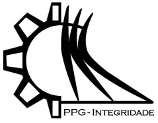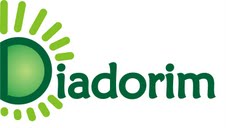DAMAGE IDENTIFICATION THROUGH THE USE OF HIGHORDER STATISTICS
DOI:
https://doi.org/10.26512/ripe.v2i25.20840Keywords:
Damage detection. High-Order Statistics. Clustering methods. Raw.Abstract
Structural Health Monitoring is based on the development of reliable and robust indicators capable to detect, locate, quantify and predict damage. Studies related to damage detection in civil engineering structures have a noticeable interest for researchers in this area. Indeed, the detection of structural changes likely to become critical can avoid the occurrence of major dysfunctions associated with social, economic and environmental consequences. Recently, many researchers have focused on dynamic assessment as part of structural diagnosis. Most of the studied techniques are based on time or frequency domain analyses to extract compressed information from modal characteristics or based on indicators built from these parameters. This work has as its main interest the use of highorder statistics (HOS) coupled with clustering techniques i.e. the k-means algorithm to detect structural modification (damage). The approach is applied directly to dynamic measurements (accelerations) obtained on site. In order to attest the efficiency of the proposed methodology,two investigations are carried out: a numerical model of a simply supported beam and a real case railway bridge, in France. It is shown that HOS coupled with clustering methods is able to distinguish structural conditions with adequate rates.
References
Alves, V., Cury, A., Roitman, N., Magluta, C., Cremona, C., “Structural modification assessment using supervised learning methods applied to vibration data”, Engineering Structures 99, 439-448.
Cury, A., Cremona, C., Diday E., “Application of Symbolic Data Analysis for structural modification assessment”, Engineering Structures 2010, 32(3), 762-775.
Cury, A., Cremona, C., “Assignment of structural behaviors in long-term monitoring: Application to a strengthened railway bridge”. Structural Health Monitoring 2012, 1, 1-20.
Farrar, C., Worden, K, “Structural Health Monitoring: a machine learning perspective.” Chichester. Wiley. 2013.
Madhulatha, T.S., “An overview on clustering methods”, IOSR Journal of Engineering 2012, 2(4), 719-725.
Santos, J.P., Cremona, C., Orcesi, A.D., Silveira, P., “Multivariate statistical analysis for early damage detection”, Engineering Structures 2013, 56, 273-285.
Downloads
Published
Issue
Section
License
Given the public access policy of the journal, the use of the published texts is free, with the obligation of recognizing the original authorship and the first publication in this journal. The authors of the published contributions are entirely and exclusively responsible for their contents.
1. The authors authorize the publication of the article in this journal.
2. The authors guarantee that the contribution is original, and take full responsibility for its content in case of impugnation by third parties.
3. The authors guarantee that the contribution is not under evaluation in another journal.
4. The authors keep the copyright and convey to the journal the right of first publication, the work being licensed under a Creative Commons Attribution License-BY.
5. The authors are allowed and stimulated to publicize and distribute their work on-line after the publication in the journal.
6. The authors of the approved works authorize the journal to distribute their content, after publication, for reproduction in content indexes, virtual libraries and similars.
7. The editors reserve the right to make adjustments to the text and to adequate the article to the editorial rules of the journal.









